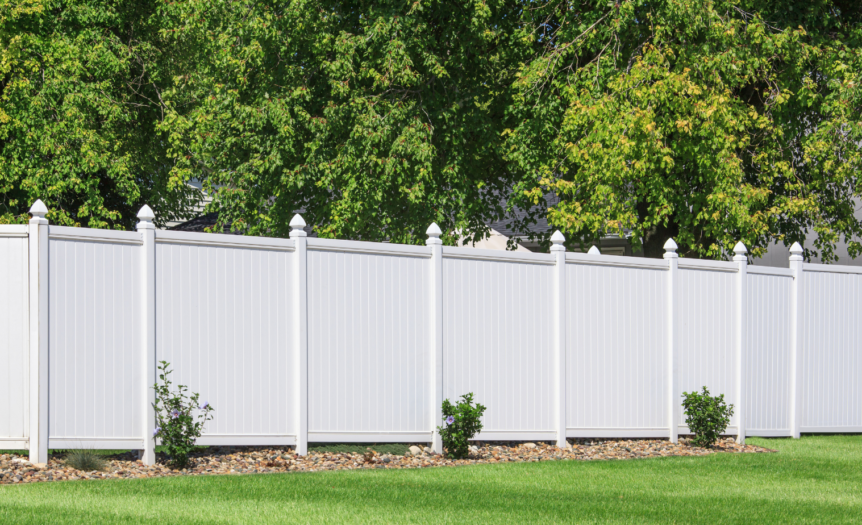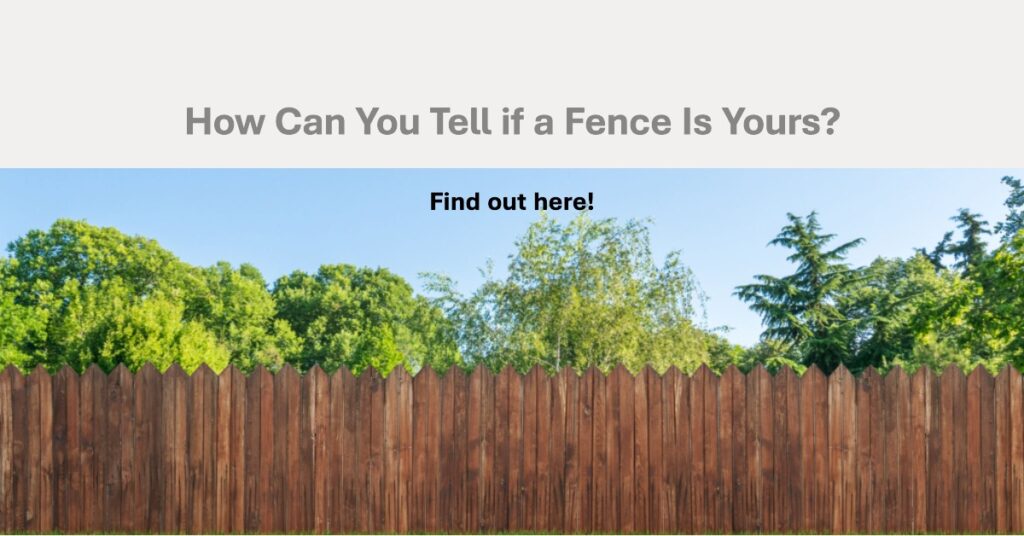Have you ever found yourself wondering if that fence surrounding your property is actually yours or perhaps a shared responsibility with your neighbors? Knowing who owns the fence can help solve maintenance issues and potentially save you from legal disputes down the line.
In this blog post, we’ll guide you through determining how can you tell if a fence is yours by checking property lines, analyzing legal documents, and examining maintenance responsibilities. Get ready to gain clarity on where your boundaries lie (pun intended) and learn how to address any fencing conflicts should they arise.
Determining Fence Ownership
To determine fence ownership, you can start by checking property lines, analyzing legal documents, and examining maintenance responsibility.
Checking Property Lines
One of the first steps in determining fence ownership is checking your property lines. A detailed understanding of where your land begins and ends can help clarify whether the fence sits entirely on your property, straddles the boundary with a neighbor’s land, or belongs to someone else altogether.
For even greater accuracy, consider obtaining a copy of your property deed or title report from your county recorder’s office. These documents will often include a legal description of your property along with its boundaries and any associated easements.
Alternatively, you may have received a survey map at the time of purchasing your home that depicts precise measurements and locations for all structures – including fences – on the parcel.
Analyzing Legal Documents
One of the most important steps in determining fence ownership is to analyze any legal documents related to your property. This includes checking your title deed, which should have a clear description of your property boundaries and any easements that may affect them.
Additionally, if you live in a homeowners association (HOA), you may need to analyze the covenants and bylaws governing fences and other property features. These documents can provide valuable information about who is responsible for maintaining different parts of the fence, as well as any agreements between neighbors regarding shared use or maintenance costs.
Examining Maintenance Responsibility
Another way to determine fence ownership is by examining maintenance responsibility. Typically, the owner of the property where the fence sits will also be responsible for its upkeep and repairs.
For example, if one neighbor installed a fence on their property but it benefits both properties (such as creating privacy for both homes), they may agree to split maintenance costs evenly.
It’s important to analyze any previous agreements or discussions about maintenance before assuming responsibility for the fence.
Resolving Disputes With Neighbors
When attempting to resolve disputes about fence ownership with your neighbors, it’s important to remain calm and open-minded, discuss the issue face-to-face, and consider sharing the costs of maintenance or repairs.
Discussing Ownership
If you have determined that the fence on your property indeed belongs to you, but there is a dispute about shared ownership with your neighbor, it may be time to have an open and frank conversation.
Discussing ownership can help both parties come to a mutual agreement about who is responsible for maintenance and repair costs.
Consider suggesting a written agreement outlining each party’s responsibilities regarding the fence, which can help avoid future misunderstandings or disputes. If necessary, involve a mediator or community organization to facilitate the conversation if needed.
Sharing Maintenance Costs
Determining fence ownership is important because it affects who is responsible for maintaining the structure. In some cases, the fence may be owned by two or more neighbors who share maintenance costs.
If this is the case, it’s important to have a clear agreement in place outlining each party’s responsibilities and expectations. For example, one neighbor may agree to handle all repairs while the other takes care of regular upkeep such as painting or staining.
Keywords: Fence ownership, Maintenance Responsibility, Neighbor agreement, Shared fence, Fence maintenance agreement
Seeking Legal Assistance
If you’re unable to resolve fence ownership disputes with your neighbor, it might be time to hire a land surveyor or real estate attorney.
Hiring A Land Surveyor Or Real Estate Attorney
If you’re still unsure about the ownership of your fence, hiring a land surveyor or real estate attorney can help clarify any confusion. A land surveyor can accurately measure and mark property lines to determine if the fence is on your land or not.
It’s important to note that seeking legal assistance should be a last resort when trying to resolve fence ownership disputes with neighbors. However, if all other attempts fail, hiring an expert can provide a definitive answer and potentially prevent further conflicts.
Conclusion
In conclusion, determining fence ownership isn’t always a straightforward task. However, by analyzing legal documents and examining maintenance responsibility, you can get a clearer picture of who owns the fence.
In cases of disputes with neighbors over shared fences, discussing ownership and sharing maintenance costs can often lead to amicable solutions. And if all else fails, seeking legal assistance from a land surveyor or real estate attorney is your best bet in resolving property line disputes.
Related Posts:
Dog Fence Ideas
Horizontal Fence ideas
How much does a Fence cost?
How to build a ground level deck?









